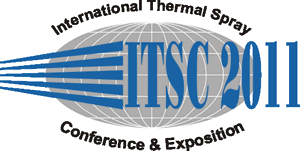
|
2544 |
|
A 3D finite-difference model for the effective thermal conductivity of thermal barrier coatings |
|
Jianghao Qiao* / LERMPS, Université de Technologie de Belfort-Montbéliard, France Rodolphe Bolot/ LERMPS-UTBM, France Hanlin Liao/ LERMPS-UTBM, France Pierre Bertrand/ LERMPS-UTBM, France Christian Coddet/ LERMPS-UTBM, France |
|
Effective properties of TBCs may be quantified thanks to different measurement techniques. Image-based analysis represents an alternative method for predicting these effective properties. During the last 10 years, 2D modelling was intensively applied to estimate the thermal conductivity from coating cross-sectional images. However, real coatings present a complex 3D architecture so that the use of 2D computations based on cross-sections has to be validated. In the recent decade, 3D imaging approaches were applied for capturing 3D images of thermal spray coatings with relatively high resolution (up to 1 micrometer). Nevertheless, high resolution brings very large computational systems for which finite-element (FE) methods seem to be unsuitable due to high requirements in terms of computer memory (RAM) capacity. In the present study, a three-dimensional finite-difference-based heat transfer model was developed for analyzing the heat transfer mechanisms through a porous structure by preserving RAM. An artificial 3D coating model, containing 300×300×300 voxels, was generated from microstructural information measured for a real coating cross-sectional image. In particular, this 3D artificial pore network was generated so that calculations performed on its cross-sections present similar results in comparison with those concerning SEM images of real coating cross-sections. Finally, the results computed for the 3D image were compared with those obtained from 2D computations performed on cross-sections of the same 3D coating model, revealing the differences between 2D and 3D image-based analyses. |